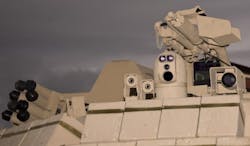FMC module for rugged military FPGA applications in SIGINT, ECM, and radar introduced by Curtiss-Wright
The card supports an onboard programmable sample clock generator and external reference input. Several FMC-516 boards can be synchronized to increase input channels with trigger input/output signals under the control of the FPGA.
The FMC-516 comes in air-cooled and conduction-cooled rugged versions. Software support includes Curtiss-Wright's FusionXF/HDL development kit, which includes software, hardware description language, and utilities.
FMC modules enable FPGAs to connect and control I/O devices on VITA 57 mezzanine cards, and provide small size, reduced I/O bottlenecks, increased flexibility, and reduced cost. The FMC connector provides I/O pins that support high-speed signals for moving data between the FMC and the FPGA.
For more information contact Curtiss-Wright online at www.cwcembedded.com.
